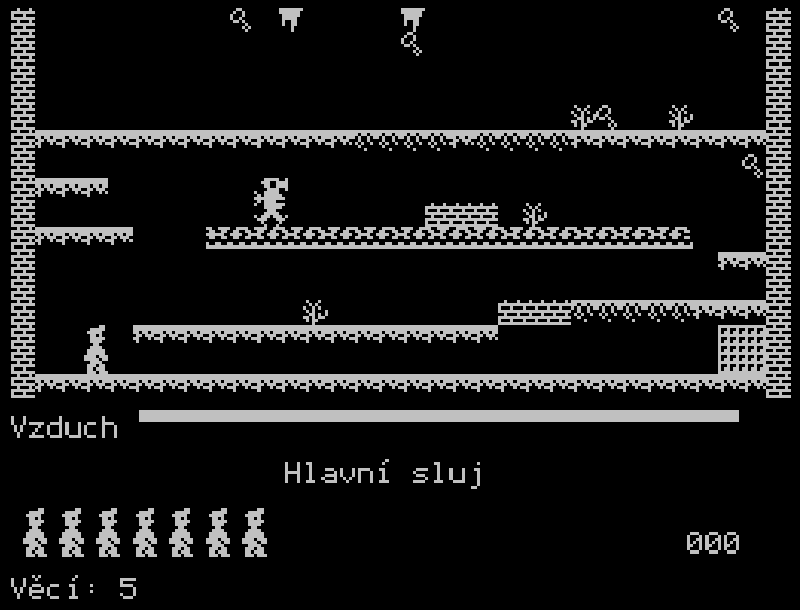A long time ago, [Martin] played with old 8-bit computers. Recently, he’s been honing his assembly skills again, and the idea of an IDE for a boatload of old systems came to him. After a year of work, he announced a multitarget IDE for 8-bit computers that works in your browser.
The project is called ASM80, and includes a code editor, a workspace to put all your code, compilers for the 8080/8085, Z80, 6502, 6800 and 6809 CPUs, emulators for all these CPUs, and emulators for a few Czech computers, the ZX Spectrum, and a few of [Grant Searle]’s single board computers.
What makes this project interesting is the syntax for all the different CPUs is pretty much the same. It’s a real, modular code editor that supports macros and everything you would expect for a code editor for ancient computers.
You can check out an assembler description here. [Martin] also has an offline, desktop-based version of ASM80 called IDE80, with a video demo of that below.
















This is interesting…
For the record, I still feel like HaD now has a bad case of Gizmodo layout, and I still think it sucks.
/grumblingthatnobodyimportantwillpayanyattentionto
Wow, all that new layout carp (it’s fishy, alright!) and we STILL can’t edit our posts!
More details so I don’t sound like Mr I am a can of spam…
A friend of mine likes to noodle around with old computers (I do too, but I can’t program the way he can, I’m still stuck on BASIC *cue laughtrack* ) and I can’t imagine him not finding this IDE useful…
I also prefer green on black, over orange on black. White on a black background is just falsifying history.
So you grumble about HaD’s new interface, and at the same time find an on-line IDE which could also change (or even disappear) at any time interesting…
I’ll stop grumbling when HaD stops looking like a generic tech blog. Which is exactly what it looks like now… this isn’t Engadget, and it shouldn’t look like it.
I wonder if HaD’s current overlords had anything to do with this… honestly, I hope not, although I admit to being skeptical of them from the get-go…
I agree. This new format is AWFUL.
How about a Poll on HaD on the new layout????
Just a little detail, maybe offtopic: ASM80 is just a bunch of static HTML and JavaScript files, so you can download whole IDE to your local server and keep working. And there is a desktop version too. So don’t worry it will disappear. :)
It’s amazing how simple the change required is to make it look reasonable:
#content {
background: #080808;
padding-left: 24px;
padding-right: 24px;
width: 74em;
}
h1, h1 > a, h2, h2 > a {
text-transform: none;
}
.single-post .entry-header .entry-title {
font-size: 36px;
}
“O or Q…” How about just “Q”? There’s always going to be that one people who keeps telling y7ou it won’t assemble even after they “read the manual” over like ten times and stuff. Please don’t give people an inch of rope that they can hang themselves on. Other than that, love the integration of the various chip architectures. Where was this when I was looking to program me calculator?
What?… No 1802?
No love for NatSemi’s SC/MP, either. It’s kind of lonely… I don’t think it was used much. Not surprised, it was a strange little widget indeed. (I was looking at the datasheet yesterday and having one WTF moment after another. That chip is weird.)
RCA Cosmac.
http://en.wikipedia.org/wiki/COSMAC_ELF
1802 is in the queue, as well as COSMAC and Sinclair MK-14 emulators… Just give me some time! ;)
“What makes this project interesting is the syntax for all the different CPUs is pretty much the same” Not sure it does make it that interesting, might save a little time if you were porting code, but that actual code is going to be wildly different – how many people are porting between these CPUs? Most people writing assembly are doing to so for their preferred CPU and even system. Or I could be totally wrong?
Better say “it might save a little time if you are switching your mind between different CPUs and their habits…” I write programs for ZXS, C64 and my SBC, and I often ask myself: Is DB in asm syntax for this CPU still DB, or DEFB, or .by? My assembler answers: “It’s all equal. Write such directives as you want to! DEFB instead of .tx? Nevermind!” But it is just a minor detail. :)
It does look like a great project, I think what makes this project interesting is more the fact it looks like a nice ide with debugger. Would love to see this running a vectrex emulator :)
PMD 85, PMI 80 are Slovak computers, not Czech
But they’re more than 25 years old.
Even then there was Slovak and Czech republic within Czechoslovakia.